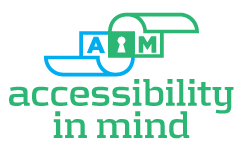“Accessibility In Mind” means thinking about accessibility EARLY in the production process. We work with our clients to create procedures that reduce the time and cost of remediation. Using best practices can save 25-50% on post-production needs, so we like to be involved as early as possible, reviewing drafts, so we can help you understand the remediation process and how a few basic steps can make it go smoothly and quickly.
All AIM-remediated PDFs are guaranteed compliant with Section 508, and with the new “ICT Refresh”, following the specifications of PDF/UA-1 (ISO Standard 14289), as specifically referenced in the Information and Communication Technology (ICT) Standards and Guidelines (updated Section 508 of the Rehabilitation Act, January 18,2018
The AIM Difference:
#1: Accessibility In Mind is a dedicated Section 508 and PDF/UA compliance service.
We are not a design/print house that does remediation on the side- remediating PDF documents, making them accessible and compliant, is our ONLY service. Find the home page of our competitors if you want to know what their main business is, then come back to AIM for your Section 508 work!
#2: We are not a middle-man, taking a commission and passing the work on to contractors.
When you work with AIM you are dealing DIRECTLY with Section 508 expert remediators, and paying less– often 30-50% less– than through other vendors. Deal direct, SAVE TIME AND MONEY!

